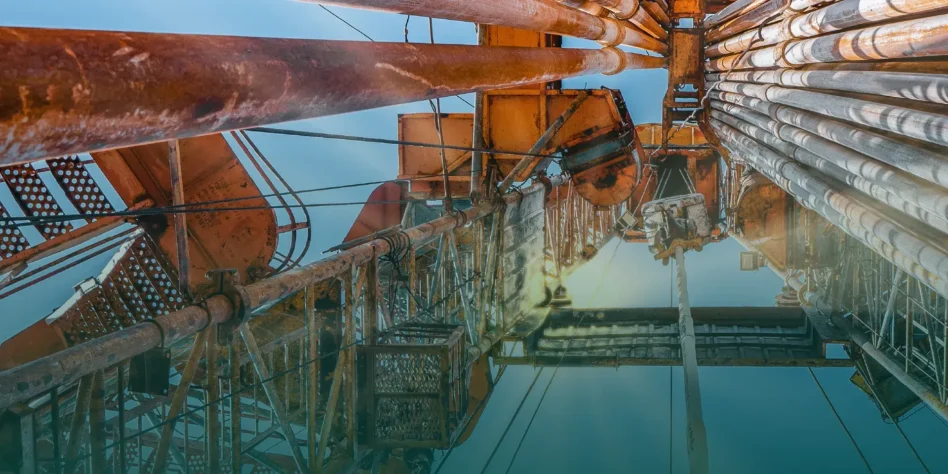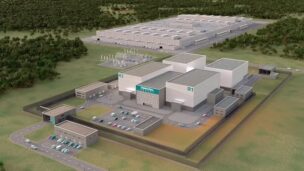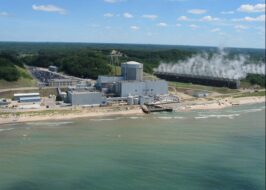Serial entrepreneur Liz Muller has a new vision for the nuclear energy sector: putting SMRs deep underground.
The idea might sound crazy, but Muller has spent enough time thinking about the benefits of boreholes—narrowly drilled holes in rock that can be used to place items, including machinery, one mile or more below the Earth’s surface—that she’s confident the natural protection below ground can make SMR deployment both cheaper and faster. That’s the idea behind her new venture, Deep Fission.
We last caught up with Muller in February, when she was CEO of borehole waste disposal company Deep Isolation. This time around, we covered the tech’s potential for power generation and what it’ll take to get the Earth humming underground with usable, abundant nuclear power.
This interview has been edited for length and clarity.
Ignition: Where did the seed of the idea for Deep Fission come from, starting from Deep Isolation?
Muller: The seed of the idea came from when we were calculating for Deep Isolation what would happen if, instead of disposing of spent nuclear fuel, you put fresh fuel underground. Is there any chance that this could start a chain reaction? And we had to do these calculations. It’s part of the required work. And the answer was no, a single fuel assembly down in a borehole a mile underground would not start a chain reaction, but it was close enough that it was a little bit intriguing, and it made us realize a couple of things.
First of all, when you’re a mile underground, you have 160 atmospheres of pressure in the water that’s above you in the borehole. And that’s interesting, because that’s the same pressure you need for a standard pressurized water reactor above ground. And in fact, one of the reasons that pressurized water reactors above ground are so expensive is because of the concrete and cement needed to create that pressure and then to contain it in case anything potentially goes wrong, and that’s that’s why there’s so much construction cost in above-ground nuclear reactors. And so it was this sort of strange moment where we realized it was almost able to go critical underground, not quite, but almost. And if we did manage to go critical, we had the pressure, and we have the containment, with the billions of tons of rock surrounding the reactor. And so it’s sort of this, “oh my goodness. Is this something that we could actually make work?” It was this beginning of an idea.
We started playing around with different designs. One standard fuel assembly wouldn’t work very well, but if you add more fuel, then it starts to work. You can start to create a chain reaction a mile underground. Our first design looked at one fuel assembly, but with a little bit of additional fuel added. But we decided we didn’t really want to change anything. We wanted to use standard, off the shelf, existing supply chains to the extent possible. So our current design is now four fuel assemblies.
There is a trade off. It is a bigger hole, which is a more expensive hole. So we’re looking at a 30-inch diameter borehole, which is on the large side, but it’s still standard casing and not very difficult to do. And we managed to create a 15 MW reactor. We do need refueling fairly frequently. The smaller the reactor, the more neutrons you lose, and the way we overcome that is by using more fuel. So we are looking at refueling just over every two years.
We’ve spoken about the idea of a borehole before, and that it remains accessible throughout its life. But what are the challenges associated with getting in and out of a borehole to deploy those fuel assemblies and then to refuel over time?
For someone who hasn’t been in the subsurface oil and gas industry, it’s mind boggling what the industry can do today, and how many tools exist to put something deep underground, to pull it back out again, to inspect it, to monitor it. I mean, all of these are existing tools now. Because our borehole is significantly larger than your standard oil and gas well, there may be some modifications. We’ll have to use tools that are on the larger side. So that’s all engineering work that we’re going to need to do, and that is probably our single biggest challenge.
Going from the conceptual design, which is still very light touch, to going to a fully engineered design that has all the specifications that you can hand off to someone who can then go and build it, or who can then go and license it, is a very significant piece of work. That’s going to be our most significant focus for the next year.
Do you plan to have that fully engineered design ready at the end of next year?
There’s the design, yes, which I think will take us 12–18 months to finish. But on our regulatory front, we also are moving forward. We want to have a first site confirmed, and we want to be able to do the site specific work. The goal is to submit both our construction and operating license and also our standard design approval in 2026.
When it comes to site selection, are there any additional challenges associated with a reactor built within a borehole as opposed to something built above ground when it comes to extracting energy, connecting to the grid, anything like that?
It’s actually very similar. The rock type doesn’t matter so much because we’re not dependent on the rock for any of the parameters of the reactor itself. So the rock, we’re counting on it for containment, we’re counting on it to hold the casing of our borehole, but that’s really it. We’re just drilling the hole, casing the well, and then all that we need for the reactor to function is the pressure that comes from the water in the borehole above the reactor.
Is there anything different that you have to consider when it comes to planning for the safety of a fission reactor a mile under the surface?
To the extent that we can use the work that’s already been done for pressurized water reactors, we want to leverage that. So we’re leveraging the existing supply chain, much of the existing work that’s been done, and we want to demonstrate that the containment is from the rock. Now, when we talk about containment from the rock, we can also leverage the work that Deep Isolation has done, and also work that other groups have done, even looking at mined repositories and other types of underground solutions.
The other thing that we need to think about is the borehole itself. So there is going to be water in the borehole. We’ve started doing these calculations, but there’s a lot more work that we still need to do demonstrating that worst case scenario, like a PWR, we can set this so it will turn off on its own. But you still want to imagine what could happen. Like is there any chance that anything could get up through the borehole itself to the surface?
I want to talk a little bit about the culture that you’ve built at Deep isolation, and now at Deep Fission, where this spark of an idea from calculations has now turned into a business. Is that flexibility and exploration built in on purpose?
Company culture is, I believe, one of the most important parts of building a business, because you can have a really cool vision, but if people aren’t working together effectively, then you’re not going to be able to implement it. It’s going to make your job much harder to achieve that vision, especially as the team grows. The team really understands that we’re all in this together, and we will all succeed together, and we’re all there to support one another. As an early stage company, there are going to be shifts, there are going to be pivots, there’s going to be a sudden opportunities that we didn’t see coming.
Has a significant amount of the team transferred from Deep Isolation, or is this a new team you’re working with?
There’s a couple other people who either have been involved or were involved with Deep Isolation at one point in time, but we’ve also recognized that the skillset is somewhat different. The deep underground radioactivity is directly applicable. How you drill a borehole is directly applicable. But we also are dealing with new things like reactor neutronics and designing a reactor itself that is new. We are also more engaged with the nuclear regulator. It’s some overlap, but not as much as you might think.
Where do you ultimately see a customer base for this?
What we’ve been able to do is learn from everyone who’s gone before us, and thank goodness that we’re not first in this space. And what I think we’ve identified is that it’s hard to sell a reactor until it has been built and proven out somewhere. So what we’re looking at is for a first implementation. We’re going to be the developer/operator, most likely. That’s in part because we think that’s going to be easiest to sell first, and it’s also part because where we think we can move forward the fastest.
Utilities, grid replacement, yes, all of that are strong potential customers for us. But who’s likely to move fastest? Well, now we’re looking at probably data centers, hyperscalers, maybe even energy companies who have off-the-grid needs. So those, I think, are most likely to be our first implementations.
Why do you think some of those first customers would choose a reactor from Deep Fission—something that’s deep underground—as opposed to some of the other SMR options that are out there on the market?
I think there’s really two significant advantages. One is that we don’t need HALEU fuel, so standard pressurized water reactor fuel is what we will use. I think there’s significant risk in the supply chain for HALEU right now, particularly for larger implementations. For the shorter time frames, if you’re looking at commercialization before 2030, it’s a risk.
The second thing is, because we don’t have massive construction costs from the time we get the license, we’re looking at probably three to six months to drill the hole, put the fuel underground, attach everything, and then connect it to the customer, or potentially the grid. So that’s very short in nuclear power frame time frames.
Even the first of a kind, we should be able to do at today’s market prices. So being able to do it at market prices today and to have a first commercially operating reactor by 2029 is pretty exciting.
How much would it cost right now at market prices to build a unit?
We’re still working on the detailing of the costs, but what I can say is that our biggest cost is the fuel. People have talked for a long time about how one of the advantage of nuclear reactors is the fuel is so inexpensive—which is true, the fuel is inexpensive compared to other types of energy—but the fuel is our single biggest cost.
The borehole is our second biggest cost, which has pretty well-established numbers. So we’ve received multiple quotes.
What that means is, because the fuel is our biggest cost, and because the borehole is not that expensive, we’re going to have a nice margin—and I’m comfortable saying that—selling electricity at today’s market prices. Maybe we don’t want to start in places where the market rates are really, really cheap—like we’re not going to be able to compete with existing legacy coal. But if you’re looking at someplace that values the stability, the reliability. Market prices certainly in the range of eight to 12 cents per kilowatt hour are something that we’re very comfortable with.
Lead Reporter of Ignition





